Land Invertebrates
Media
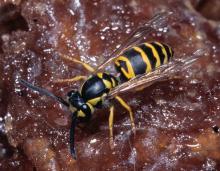
Species Types
Scientific Name
Vespula spp.
Description
Yellowjackets are bee-sized social wasps that build paper nests, usually underground. Their defensive stinging can make them a major pest when they nest near people.
Media
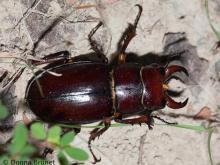
Species Types
Scientific Name
About 40 species in North America north of Mexico
Description
Stag beetles are a family that, though not very colorful, have prominent pincers! Male stag beetles usually have enlarged, sometimes astonishing jaws. These “antlers” give rise to the common name.
Media

Species Types
Scientific Name
More than 400 species in North America north of Mexico
Description
The name is a warning: blister beetles are famous for their chemical defenses. Beetles in this family can exude an oil that can cause a person’s skin to blister.
Media
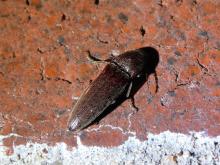
Species Types
Scientific Name
Approximately 1,000 species in North America
Description
Their streamlined shape is distinctive, but the behavior of click beetles is even more unique: Placed on their backs, these beetles flip suddenly into the air with an audible click.
Media

Species Types
Scientific Name
Approx. 175 species in North America north of Mexico
Description
Fireflies are amazing beetles that use “cold light” (bioluminescence) to attract mates. They are commonly seen as they fly and glow in summer evenings.
Media

Species Types
Scientific Name
Nearly 500 species in North America north of Mexico
Description
Soldier beetles are most often seen on flowers. Many species in this family are pollinators. Yellow, orange, and red are their most common colors, besides black and brown.
Media

Species Types
Scientific Name
About 85 species in North America north of Mexico
Description
Green lacewings are delicate insects whose larvae are ravenous predators of aphids. This makes the lacewing a friend to gardeners!
Media
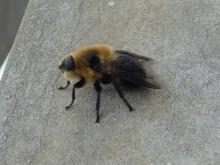
Species Types
Scientific Name
About 40 species in North America north of Mexico
Description
Bot flies are chunky, beelike flies usually with rounded heads. Adults are not commonly seen. The larvae are short, pudgy, segmented grubs that live as parasites in the tissues of animals. Those that live just under the skin often form a bulge. Some types live in the nasal or throat cavities of deer.
Media
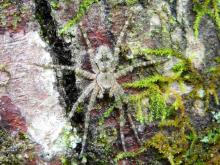
Species Types
Scientific Name
Dolomedes albineus
Description
Whitebanded fishing spiders are often seen on tree trunks, walls, or other vertical surfaces, sometimes far from water. The coloration and markings can vary, but many individuals have an olive-green cast that helps them blend in with mosses and lichens. Note the bristly legs.
Media
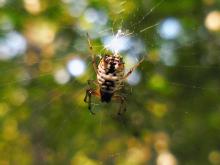
Species Types
Scientific Name
Micrathena mitrata
Description
The white micrathena has 2 short pairs of tubercles and a white abdomen with a few distinct black blotches on the upper side. In an odd way, it looks like it's wearing a turban. This is one of three Missouri species of micrathenas, also called spiny orbweavers.
See Also



Media

Species Types
Scientific Name
Cisseps fulvicollis
Description
The yellow-collared scape moth is more often “orange-collared.” And whether you think it looks more like a firefly or a wasp, it’s still a moth!
Media

Species Types
Scientific Name
Nearly 150 species in North America north of Mexico
Description
Slim, delicate plume moths are instantly recognizable by their T-shaped silhouette, long legs, and muted shades of tan and brown. It can be hard to separate the various species.
Media

Species Types
Scientific Name
Pyrrharctia isabella
Description
Not many people know the adult Isabella tiger moth when they see one, but we’re all acquainted with its caterpillar, the woolly worm, or woolly bear.
About Land Invertebrates in Missouri
Invertebrates are animals without backbones, including earthworms, slugs, snails, and arthropods. Arthropods—invertebrates with “jointed legs” — are a group of invertebrates that includes crayfish, shrimp, millipedes, centipedes, mites, spiders, and insects. There may be as many as 10 million species of insects alive on earth today, and they probably constitute more than 90 percent all animal species.





















